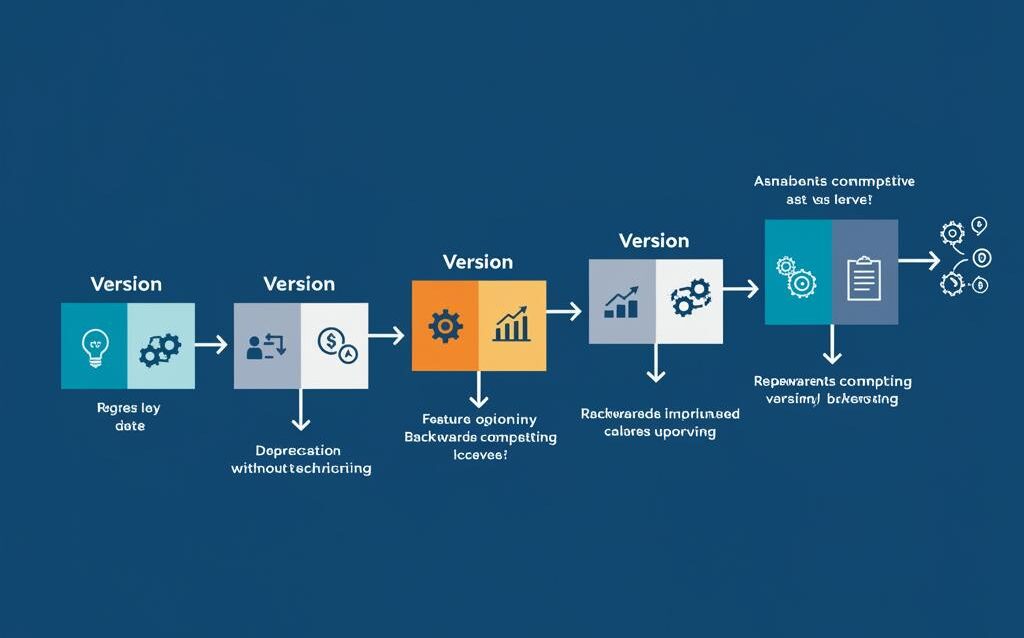API Versioning: Manage Multiple Versions & Avoid Debt
API Version Management: Supporting Multiple Versions Without Technical Debt
In the rapidly evolving digital landscape, APIs are the backbone of modern applications. They enable seamless communication and data exchange between different systems. However, as your business grows and requirements change, your API will inevitably need to evolve. This evolution often necessitates introducing new versions of your API while simultaneously supporting older versions to avoid breaking existing integrations. Managing multiple API versions effectively is crucial to maintain a positive developer experience and prevent the accumulation of technical debt. This post will explore strategies and best practices for managing API versions without creating a maintenance nightmare.
Why API Versioning is Essential
Before delving into the how-to, let’s understand why API versioning is so important.
Breaking Changes
Introducing breaking changes to an API without versioning can have disastrous consequences. Existing clients relying on the old API will suddenly find their applications failing, leading to frustration and potential business disruptions. Breaking changes might include:
- Removing or renaming API endpoints.
- Changing the request or response format.
- Altering the data types of parameters.
- Modifying the authentication scheme.
Backward Compatibility
API versioning allows you to introduce new features and improvements while maintaining backward compatibility for existing clients. This ensures a smooth transition for developers, allowing them to migrate to the new version at their own pace.
Developer Experience
Clearly defined API versions provide developers with a clear understanding of what to expect from the API. This reduces confusion and makes it easier for them to integrate with your system, leading to a better overall developer experience.
Strategies for API Versioning
There are several common strategies for implementing API versioning, each with its own advantages and disadvantages. Choosing the right approach depends on your specific needs and the complexity of your API.
URI Versioning
URI versioning is the most common and widely accepted approach. It involves including the API version number in the URL path.
Example:
/api/v1/users
/api/v2/users
Advantages:
- Simple and straightforward to implement.
- Easy to understand and use for developers.
- Clear separation of different API versions.
Disadvantages:
- Can lead to long and verbose URLs.
- May require changes to your routing configuration.
Header Versioning
Header versioning involves specifying the API version in a custom HTTP header.
Example:
Accept: application/vnd.example.v1+json
Advantages:
- Cleaner URLs compared to URI versioning.
- Less intrusive to existing routing configurations.
Disadvantages:
- Less visible than URI versioning.
- Requires developers to understand and use HTTP headers correctly.
Query Parameter Versioning
Query parameter versioning involves specifying the API version as a query parameter in the URL.
Example:
/api/users?version=1
Advantages:
- Easy to implement.
Disadvantages:
- Not recommended due to potential for URL pollution and confusion.
- Less discoverable than other methods.
- Can conflict with other query parameters.
Minimizing Technical Debt in API Versioning
While API versioning is essential, it can also introduce technical debt if not managed carefully. Here are some strategies to minimize technical debt:
Use a Versioning Strategy Consistently
Choose a versioning strategy and stick to it. Inconsistency will lead to confusion and increased maintenance costs. If you start with URI versioning, continue using it for all subsequent versions.
Write Comprehensive Documentation
Clear and comprehensive documentation is crucial for API versioning. Document each version’s endpoints, request/response formats, and any breaking changes. Use tools like OpenAPI (Swagger) to generate interactive documentation.
Automated Testing
Implement automated tests to ensure that each API version functions correctly and maintains backward compatibility. This helps prevent regressions and reduces the risk of introducing breaking changes unintentionally.
Deprecation Policy
Establish a clear deprecation policy for old API versions. Communicate the deprecation schedule well in advance to allow developers ample time to migrate to the new version. Consider providing migration tools or guides to assist developers in this process.
Code Reusability
Strive for code reusability across different API versions. Avoid duplicating code as much as possible. Use shared libraries and components to minimize maintenance efforts. Refactor common logic into reusable functions or classes.
Embrace API Gateways
An API gateway can simplify version management by routing requests to the appropriate API version based on the URL, header, or other criteria. API gateways also provide other benefits such as authentication, authorization, rate limiting, and monitoring.
Conclusion
Managing API versions effectively is a critical aspect of building and maintaining robust and scalable applications. By adopting a well-defined versioning strategy, providing comprehensive documentation, and implementing automated testing, you can minimize technical debt and ensure a smooth experience for developers integrating with your API. Remember to establish a clear deprecation policy and communicate any changes well in advance. Ultimately, a well-managed API versioning strategy will contribute to a more sustainable and successful API ecosystem.

